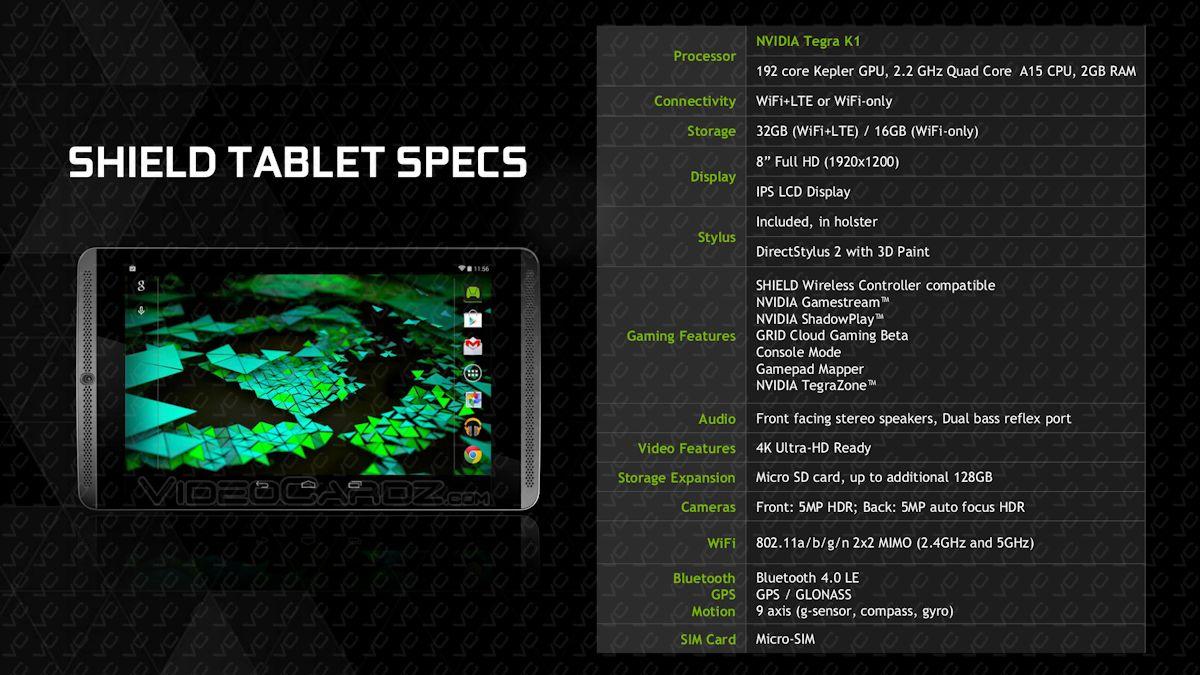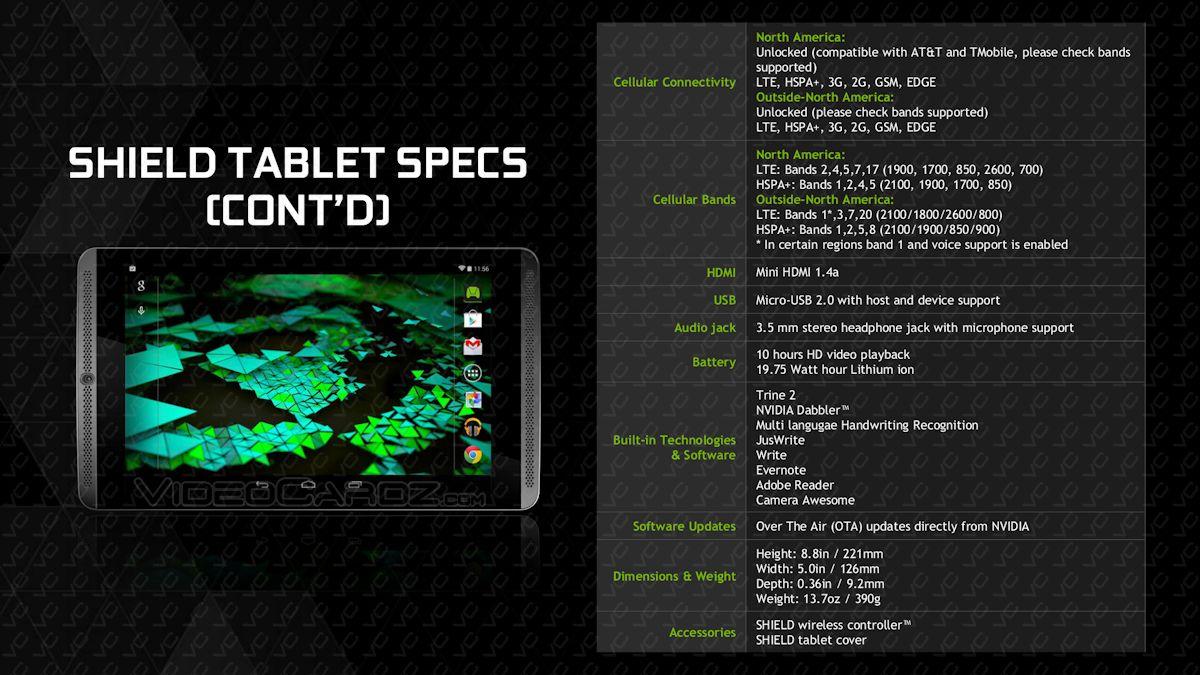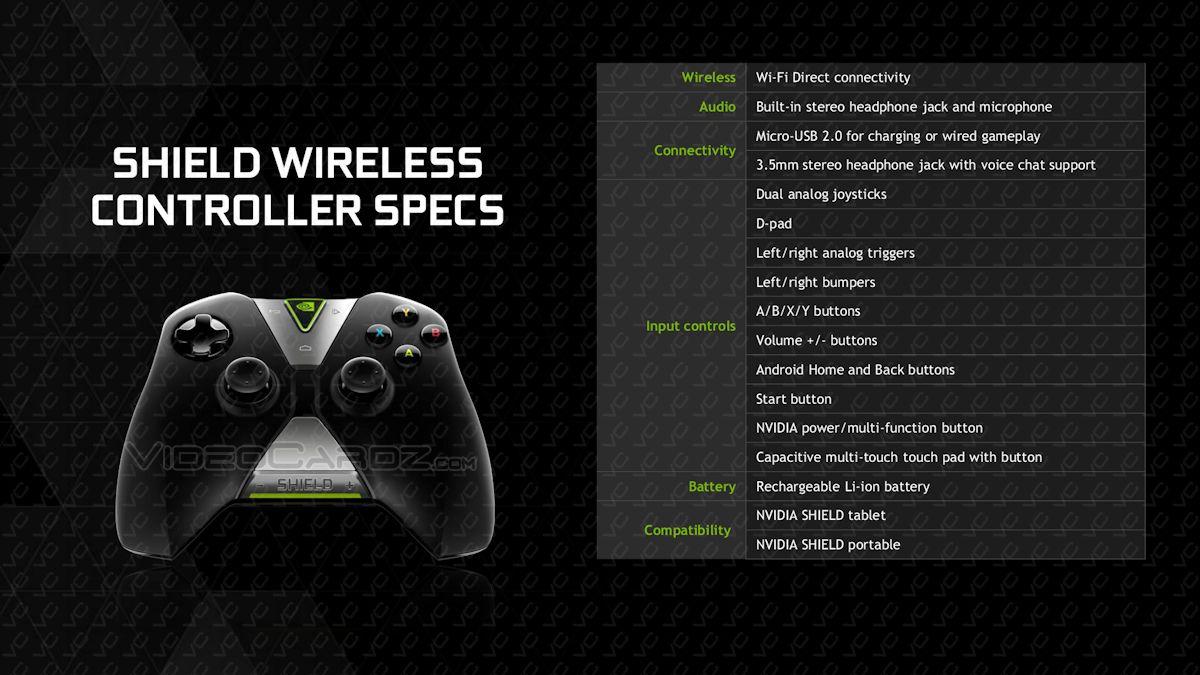
Based on a report by BBC and a leaked image by @evleaks, Nvidia is currently prepping two devices: one that is Ouya-like in functionality, and the other being a Shield tablet, respectively.
A Shield microconsole?
Beginning with the BBC report, the console will run on Android and utilize a “budget-priced” controller to navigate menus and play games, among other activities. While it won’t directly compete with the PlayStation 4 and Xbox One, the console’s claim to fame will be the ability to stream PC games to a display via HDMI-out.
According to the report, this will be done via Nvidia’s GeForce Experience system, a feature that is outfitted in Nvidia’s more powerful graphics cards. Even so, the console itself will include the company’s Tegra K1 chip, a chip that impressed us when it was unveiled earlier this year at CES. While Nvidia will surely want to sell more than a few of the reported console, BBC speculates that it could be a showcase in order for the Tegra K1 processor to be adopted by other tablet and smartphone manufacturers.
When asked about the rumored console, an Nvidia spokesperson told BBC that the company has an “awesome new gaming product that is launching soon.” It’s not not exactly a confirmation, but not exactly a denial, either.
What about the Shield tablet?
Meanwhile, Evan Blass, known as @evleaks, revealed a leaked image of what could be the Shield tablet. Looking at the image, stylistically, the device looks to have an aluminum chassis with front-facing speakers and a front-facing camera. Based on the image, the Shield tablet looks to be strikingly similar to Nvidia’s Tegra Note, and while it is unknown whether the leaked image is the real deal, VideoCardz acquired slides that seem to confirm the tablet’s aesthetics, as well as its specifications.
According to the leaked slides, the Shield tablet will have an 8-inch 1920×1200 pixel IPS display. Both the front- and rear-facing shooters are 5 megapixels, with the tablet including 16GB and 32GB of internal storage. However, the 32GB variant includes LTE, while the 16GB variant will be Wi-Fi-only. The LTE variant will be unlocked and will be compatible with AT&T and T-Mobile bands.
The tablet touts 10 hours of battery life for HD video playback, as well as a Mini HDMI port and Nvidia’s latest and greatest, the Tegra K1 chipset, alongside 2GB of RAM. While the hardware is certainly capable of playing the most demanding of Android games, interestingly, it will include a stylus the company calls the DirectStylus 2. To take advantage of the stylus, the tablet will come preinstalled with multi-language handwriting recognition, as well as Write, Evernote, and JusWrite, among others.
Also leaked in the slides was the aforementioned Shield controller, which will talk with the Shield tablet and original Shield using Wi-Fi Direct connectivity. The controller includes a rechargeable battery pack that is charged through a Micro USB 2.0 port, which can also be used for wired gameplay. The controller also includes a headphone jack, as well as a capacitive multi-touch pad. Input-wise, other than that multi-touch pad, you’ll find your usual array of buttons: a directional pad, A/B/X/Y buttons, dual analog sticks, and left/right bumpers and triggers.
According to the slides, the 16GB and 32GB versions of the Shield tablet will retail for $300 and $400, respectively, while the Shield controller will go for $60. Finally, Nvidia will sell the Shield cover, which presumably acts like the iPad Smart Cover, for $40. The Shield tablet will be available in the U.S. and Canada on July 29, with Europe getting the tablet on August 14. As for other regions, they should see it sometime this fall.






